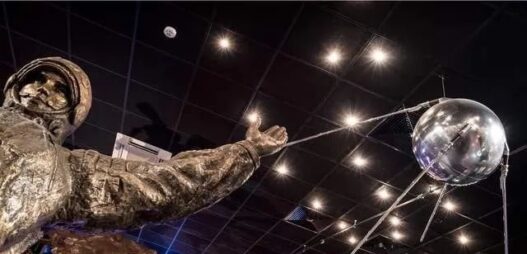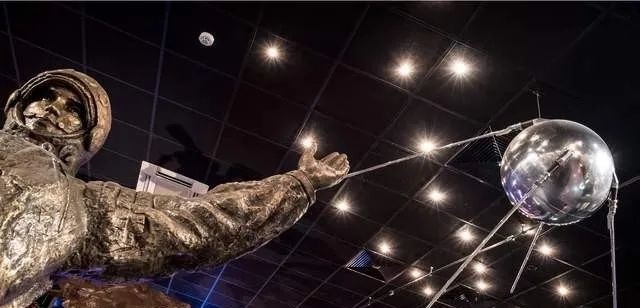On October 4, 1957, the world witnessed the launch of Earth’s first artificial satellite, Sputnik. This marked a pivotal moment in history. But behind this achievement was a much darker, military-driven competition. The moment wasn’t just the start of the space age. It was also a manifestation of the ongoing Cold War rivalry between the United States and the Soviet Union. It became a race not only for space but also for military dominance.
The Space Race Begins
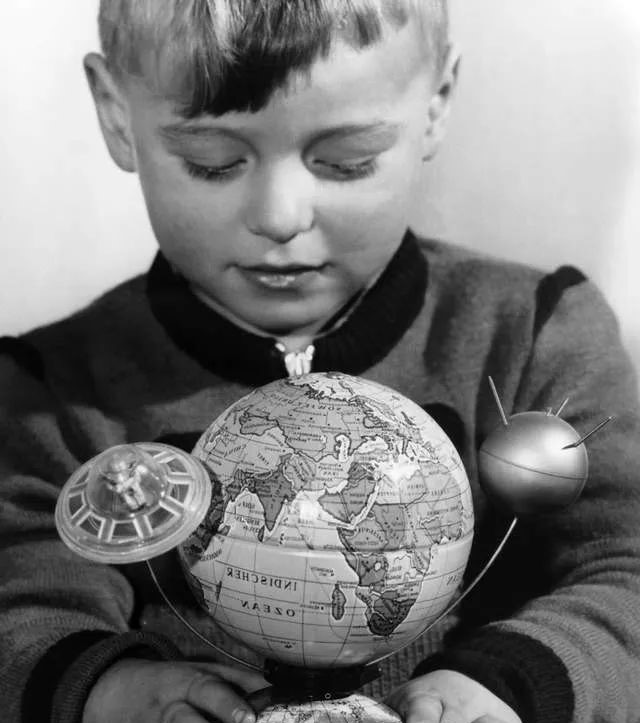
The Sputnik launch occurred during the International Geophysical Year (IGY), a global scientific effort from 1957 to 1958. While the IGY aimed for peaceful cooperation, it quickly became a proxy battleground for the U.S. and the USSR. Scientists from 67 nations participated in the effort. However, the tension of the Cold War remained, especially after the death of Soviet leader Joseph Stalin in 1953.
In 1955, U.S. President Dwight D. Eisenhower proposed the “Open Skies” policy. This would allow nations to conduct aerial reconnaissance on one another. The Soviets rejected the proposal. Soon after, both superpowers announced plans to launch scientific satellites as part of the IGY. John Logsdon, a former NASA advisor, explained that the satellite race wasn’t just about science. It was also a race to build the first intercontinental ballistic missiles (ICBMs). At the time, the U.S. was developing the Atlas missile, while the Soviet Union was working on the RS-7 missile.
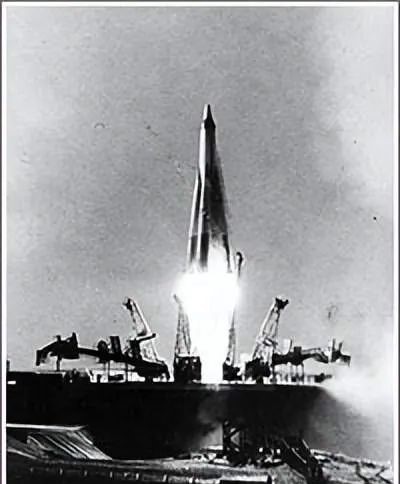
The Race for Rockets
The V-2 rocket, developed by Nazi Germany during World War II, was the first long-range guided missile. After the war, both the U.S. and the Soviet Union adapted these rockets for their own purposes. Both sides worked to extend their range and capabilities for ICBMs.
From 1954 to 1957, Sergei Korolev, the Soviet rocket scientist, led the Soviet Union’s ballistic missile program. Korolev is often hailed as the father of the space age. He also played a key role in developing the R-7, the world’s first ICBM. By the time Sputnik was launched, both the U.S. and the USSR had successfully tested their hydrogen bombs. The development of ICBMs provided a means to deliver nuclear warheads over long distances.
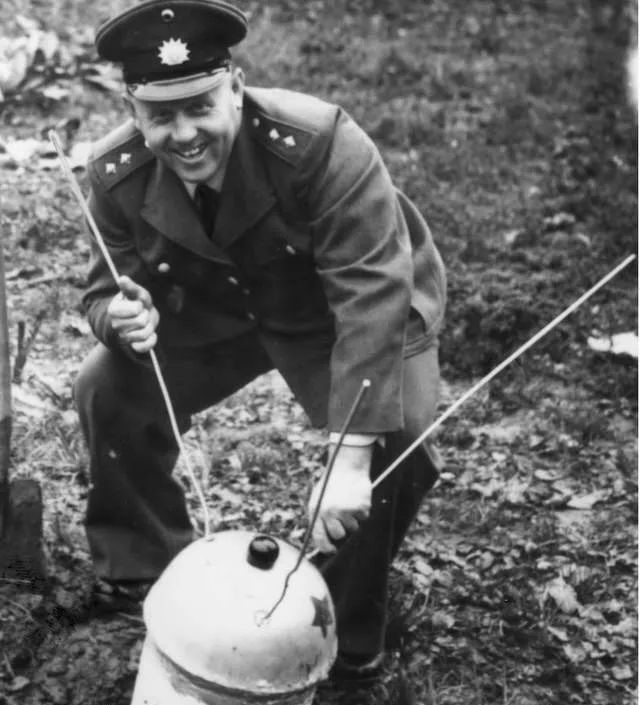
In May 1957, the Soviet Union attempted its first launch of the RS-7. The attempt ended in failure. But by August 21 of that year, the USSR successfully launched the R-7. It flew 3,700 miles from Kazakhstan to Kamchatka, proving the viability of their ICBM. This success set the stage for the Sputnik launch, which would use a modified version of the R-7.
The Making of a Simple Satellite
Initially, the Soviets planned to create a large, complex satellite for scientific purposes. But Korolev quickly realized that the satellite project was too ambitious. The timeline wouldn’t allow for such a project. Instead, Korolev proposed the development of a simpler, smaller satellite. The goal was clear: ensure the Soviet Union would be the first to send something into orbit.
After successfully testing the R-7, Korolev received approval to launch his “simple satellite.” On October 4, 1957, Sputnik was launched into space. It weighed about 80 kilograms. By contrast, the U.S.’s Explorer 1, which would be launched months later, weighed only 4 kilograms. The successful launch demonstrated that the Soviet Union had the ability to send payloads into space. More importantly, it proved that the USSR had rockets capable of delivering nuclear warheads across continents.
The Unexpected Outcome
Although Sputnik made a huge impact, it wasn’t originally intended to serve as a major scientific tool. It was part of a broader effort to demonstrate Soviet technological superiority. The true scientific satellite, Sputnik 3, launched in 1958, was designed to study Earth’s ionosphere. It provided valuable data for scientists around the world.
Despite Sputnik‘s limited contribution to science, its global impact was undeniable. It marked the beginning of a new era in space exploration. It was also a defining moment in the Cold War rivalry between the U.S. and the USSR.
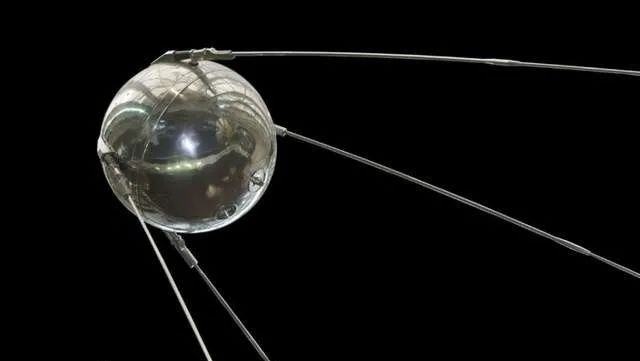
The Space Race Escalates
While Sputnik is often considered the start of the space age, many historians argue that true space exploration began earlier. As Jonathan McDowell, an astrophysicist at Harvard-Smithsonian, points out, the real beginning may have been in 1942. That year, the German V-2 rocket made its first successful launch into the upper atmosphere.
The V-2 rocket was developed by Wernher von Braun, who would later play a key role in the U.S. Apollo program. His work contributed to the eventual launch of the U.S. first satellite, Explorer 1. By 1957, many nations had developed their own versions of the V-2. There was no clear answer to who first reached the boundary of space, but the Cold War rivalry ensured that it would become a race that continued to the stars.
For former NASA advisor John Logsdon, the “race” became official when the Soviet Union made its decision to be the first to launch an object into orbit. “It’s the line in the sand,” Logsdon said. This race would eventually lead to the U.S. landing a man on the moon in 1969.
Conclusion
The launch of Sputnik marked the first successful satellite in space. But it also symbolized the start of a much larger competition. The space race was as much about military power as it was about scientific achievement. It would shape the future of space exploration for decades. For the U.S., it was a wake-up call. It led to the creation of NASA and the race to the moon. For the Soviets, it was a triumph. Sputnik demonstrated their technological might during the Cold War.







